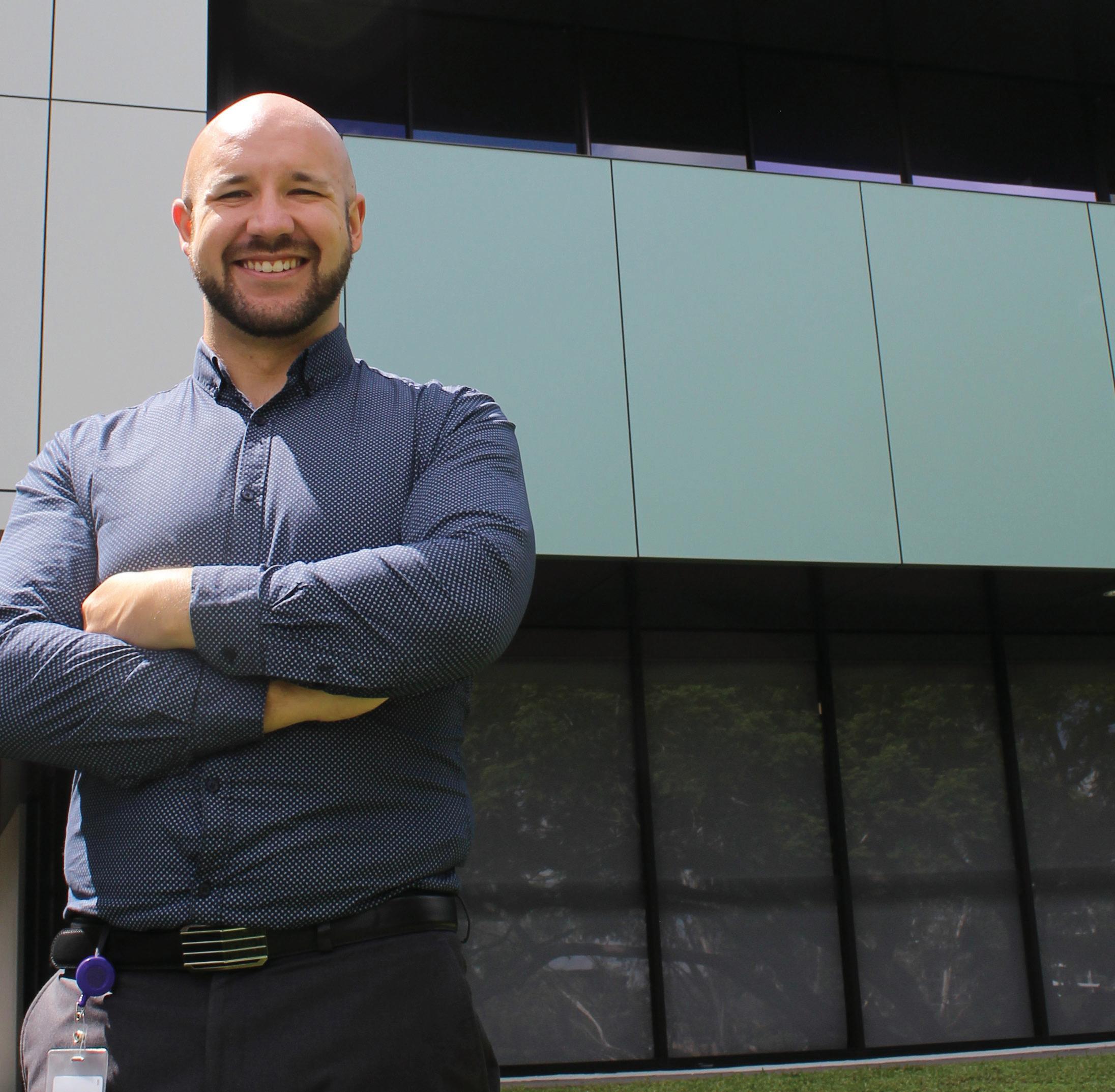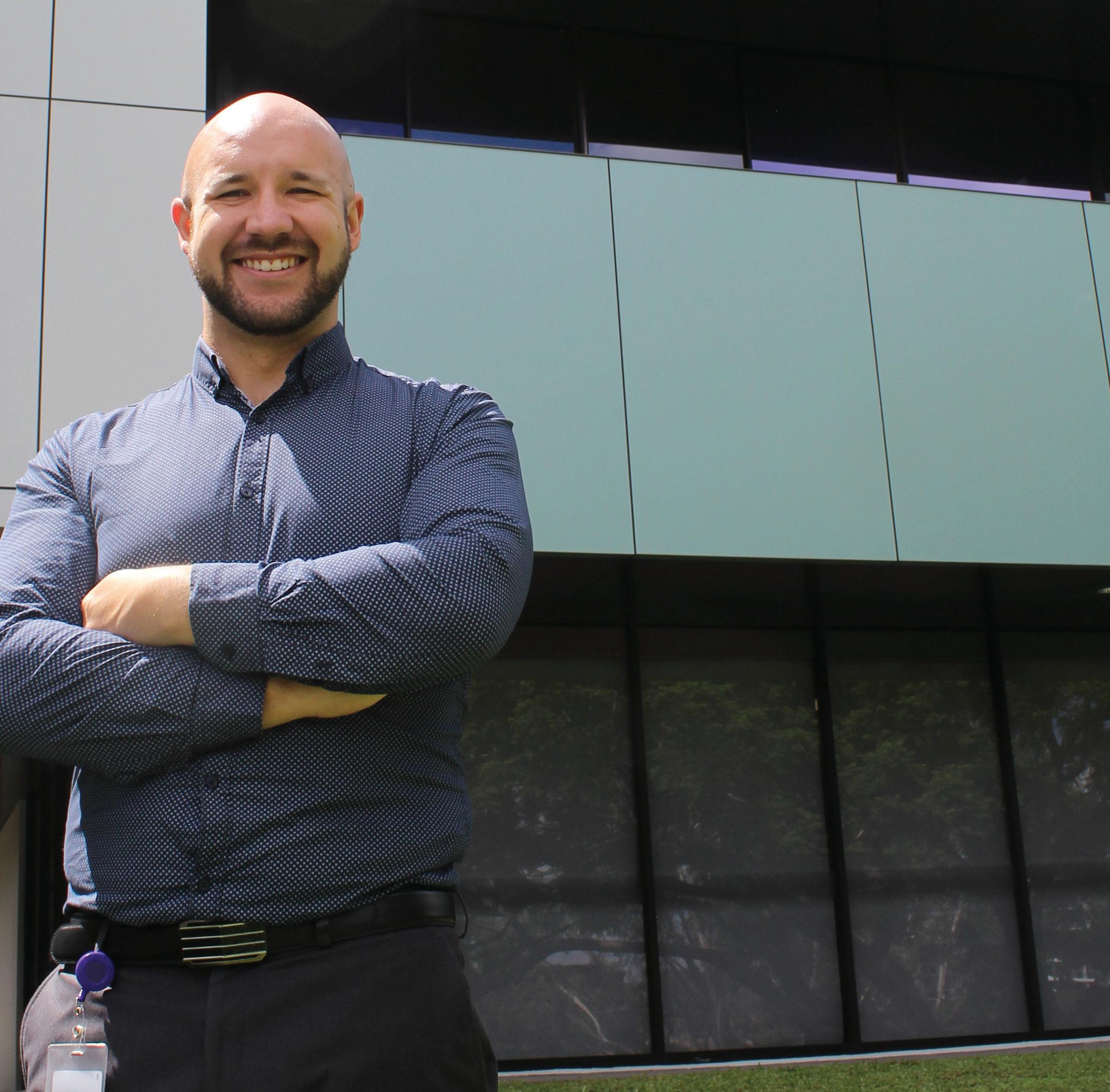
4 minute read
The Voice
A path to self-determination for Aboriginal and Torres Strait Islander peoples
It’s not often Australians are asked to participate in a national referendum. Since federation, there have been 44 referendums, only eight of which were successfully carried.
Advertisement
Referendums can be divisive. They can (and should) trigger a national debate.
But they can also mark a unifying moment in our country’s history.
Later this year, Australians will be asked a simple question:
Do you support an alteration to the constitution that establishes an Aboriginal and Torres Strait Islander Voice?
It is a simple, if not uncomplicated principle. The idea of constitutional recognition for Aboriginal and Torres Strait Islander peoples has, in fact, been around for decades and supported by most governments and shadow governments since the early 2000s.
However, as QNMU First Nations Strategy, Policy and Research Officer Sye Hodgman explains, there is an important difference between ‘constitutional recognition’ and the Voice.
“The Voice embeds a mechanism for self-determination for Aboriginal and Torres Strait Islander peoples, whereas constitutional recognition is simply an acknowledgement of Aboriginal and Torres Strait Islander peoples’ existence in the constitution,” Sye said.
So what is the Voice?
Essentially, a Voice to Parliament is a body enshrined in the constitution that would enable Aboriginal and Torres Strait Islander peoples to provide advice to the parliament on policies and projects that impact their lives.
While such bodies have existed at various points outside the constitution in the past, they have been established and dissolved at the whim of the government in power at the time.
“This constitutional change would simply establish the necessity to continue this mechanism,” Sye said.
“This is about self-determination for Aboriginal and Torres Strait Islander peoples on matters that affect them.
“Obviously, Australians should care about this because at its core it’s about a fair go for Aboriginal and Torres Strait Islander peoples.
“But at the end of the day, this referendum will not impact 97% of Australian people in any tangible way … however it will have a huge impact on Aboriginal and Torres Strait Islander communities.”
Seeing vs hearing
One of Australia’s eight successful referendums was in 1967, in which Australians overwhelmingly voted in support of changing the constitution to recognise Aboriginal and Torres Strait Islander peoples as part of the Australian population, allowing the Commonwealth to make laws for them and include them in the census.
Over 90% of Australians voted in favour, with all states recording a ‘yes’ result.
Sye described it as the “single most unifying moment in Australian democratic history”.
“Whereas the 1967 referendum was about ‘seeing’ First Nations peoples, this referendum is all about ‘hearing’ us,” Sye said.
“It is, essentially, a culmination of the spirit of the original referendum in allowing Aboriginal and Torres Strait Islander peoples the opportunity to have meaningful input into Aboriginal and Torres Strait Islander matters and a mechanism for self-determination.”
“Take control”
Gunai/Kurnai man Jason Coombes has worked for 10 years as a remote area nurse in Far North Queensland, the Northern Territory, Victoria and South Australia. He currently works for Remote Area Health Corps and is a QNMU member.
Jason said the time for a Voice to Parliament was long overdue.
“We need the Voice now more than ever – it is time for Aboriginal peoples to take control of their outcomes, including their education, health and future,” Jason said.
“I have observed that when it comes to the big decisions, these things get handballed back and forth depending on who is in the decision-making seat.
“We need to be the ones to make the big decisions moving forward, we are at a stalemate with how the system is currently working.
“We need to try and do things the Blackfella way – take health care to the people, not demand the people come to the clinic.
“I am a 53-year-old proud Aboriginal man, and the cycle should have well and truly been broken by now. Sadly, it is the same if not worse and that breaks my heart.
“It’s why I am still out there working remote with these disadvantaged communities.”
Navigating the public debate
As with any national debate, there are competing views and priorities, and there will always be those who seek to politicise the issue.
But it is up to every Australian to educate themselves and not get side-tracked by arguments that are deliberately intended to confuse or muddy the waters.
One of the main counter-arguments to the Voice to Parliament is that it lacks any detail. Notwithstanding the fact that Australia’s constitution is made up of foundation ‘principles’, there is plenty of information and detail on the Voice that is available for all Australians to peruse.
Visit www.yes23.com.au to read about the Voice.
“To people who say there’s no detail, I draw a parallel to voting on whether there should be a new trainline built,” said Sye.
“When voting on something like that, it’s important to understand things like how it will impact on homes along the new railway line, and what the environmental impact will be.
“But we rely on experts to actually implement it and decide things like, how fast will the train go, what will the railway sleepers be made from, who will drive the trains, and so on.”
It is also important to note that not every Aboriginal or Torres Strait Islander has endorsed the Voice to Parliament.
“This referendum and the Uluru Statement does not and cannot represent the wants and needs of all Aboriginal and Torres Strait Islander peoples,” said Sye.
“Aboriginal and Torres Strait Islander peoples are not homogenous, and therefore don’t all have one singular voice or opinion.
“However, the statement and the proposed solutions outlined within have been generated through the largest and most considered consultative process that has ever been undertaken with Aboriginal and Torres Strait Islander peoples.
“It is fair to say, therefore, that most Aboriginal and Torres Strait Islander peoples are in support.”
Have discussions with your family, friends and community:
◆ Talk to people about the importance of the Voice and the impact this can have on real self-determination for Aboriginal and Torres Strait Islander peoples.
◆ Remind people that this referendum was asked for by Aboriginal and Torres Strait Islander peoples for a fair representation in their own affairs, and will not impact on non-Indigenous Australians negatively.
Queensland’s paves a Path to Treaty
WHILE THE Voice to Parliament Referendum is the current focus of the Federal government, the Queensland government is progressing a truth-telling and treaty process at a state level, with the introduction of the Path to Treaty Bill.
The Palaszczuk state government introduced this historic Bill to state parliament in February laying the framework for establishing a First Nations Treaty Institute and a formal Truth Telling and Healing Inquiry to support the process of reconciliation and healing.
The Bill, which is the next phase of a commitment reached between Aboriginal, Torres Strait Islander and non-indigenous people in August last year, will outline the scope and composition of the Institute and the Truth Telling and Healing Inquiry.

Under the legislation, the Treaty Institute will be a statutory body, independent from government which will







